Geometric Calibration
TechnologyIntroduction
Geometric calibration refers to the ability of a camera to translate a 2D image into a 3D object to map the real-world field of view. In photogrammetry, distances are measured in images. In conventional photography, distortion is measured and compensated in the image processing pipe. In automotive applications, distances to objects are calculated based on the measured geometrical characteristics of the camera or a stereo camera pair.
Why is geometric calibration essential?
As stated above, geometric calibration is vital for systems that rely on detecting and accurately mapping 3D objects in a moving scene. After proper geometric calibration, the camera system will more precisely measure distances and identify objects in a scene. The system will also better adjust for high distortion levels and accurately align stereo camera pairs.
The camera systems that rely on geometric calibration are found in various industries that use cameras, but they are of significant importance in the automotive industry. Automotive systems, in particular, need to map distances to objects to improve performance and safety.
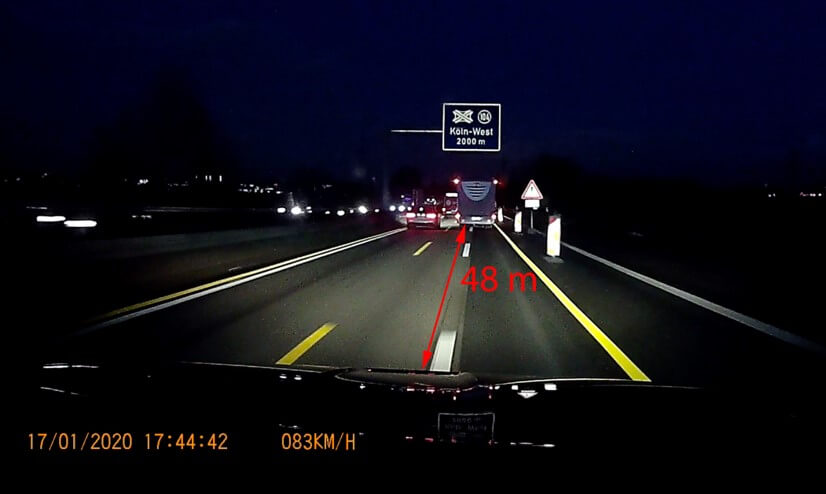
Geometric calibration test methods
There are several current geometric calibration methods, most notably using test charts. These charts use standard patterns (e.g., crosses, dots, or checkerboard) to determine the distortion over the imaging field. The chart will need to match the camera’s field of view, i.e., the wider the field of the view, the larger the chart must be. Automotive cameras typically have wide-angle cameras and thus require extra-large charts for proper geometric calibration.
More compact test methods require relay lenses. Using relay lenses offers the opportunity to measure from infinity, but they also introduce distortion and must also be characterized before geometric calibration. Both of these methods allow for distortion measurements and inner orientation, but they cannot measure outer orientation.
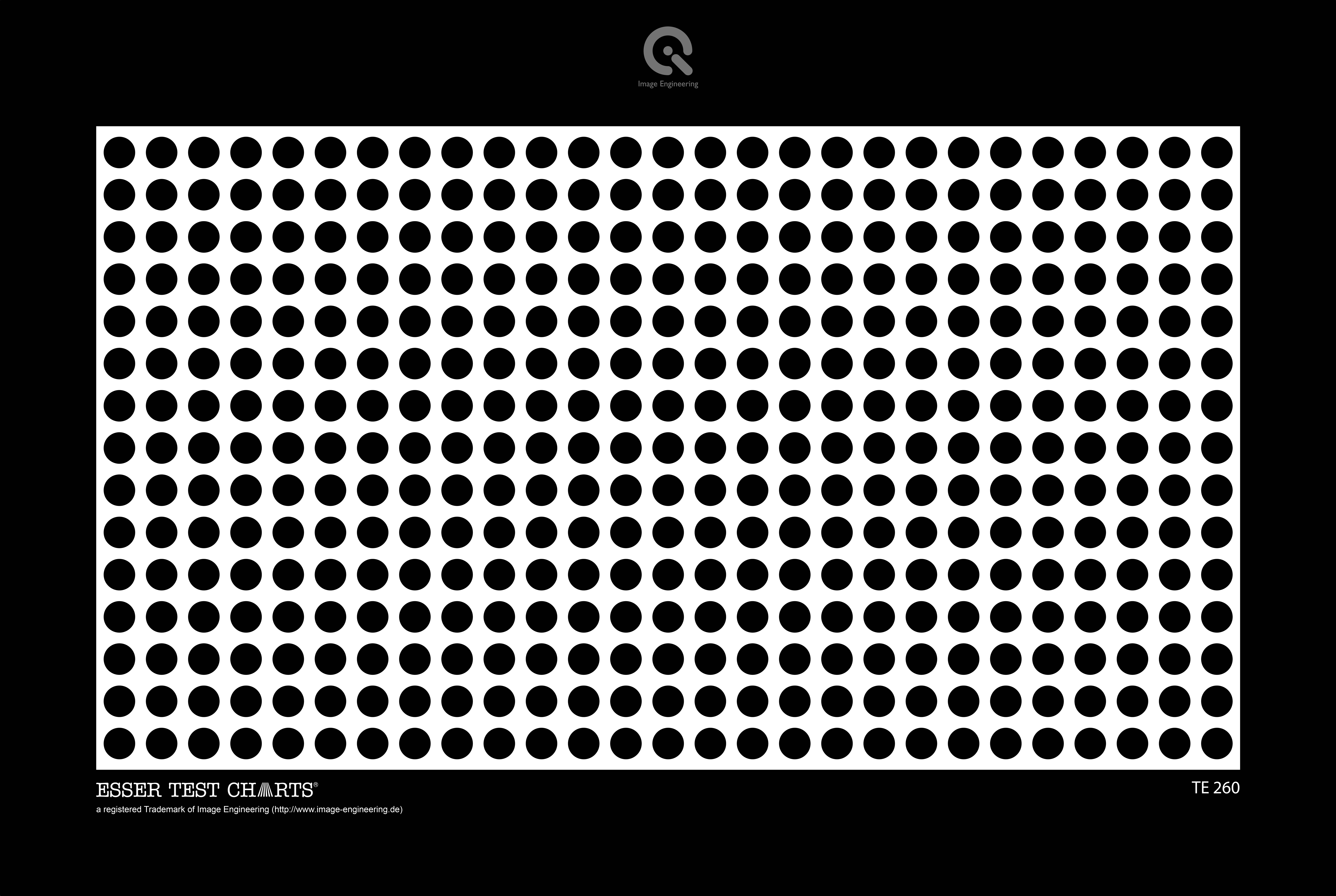

A new geometric calibration test method
As the need for geometric camera calibration continues to expand in the automotive industry, the demand for more robust test methods is quickly increasing. With that in mind, we set out to develop a new solution that would advance geometric camera calibration to a new level.
When designing new geometric calibration technology, we pushed to address the issues that arise when using the traditional methods, and, as a result, the GEOCAL was born. GEOCAL technology uses a beam expanded laser in combination with a diffractive optical element (DOE).
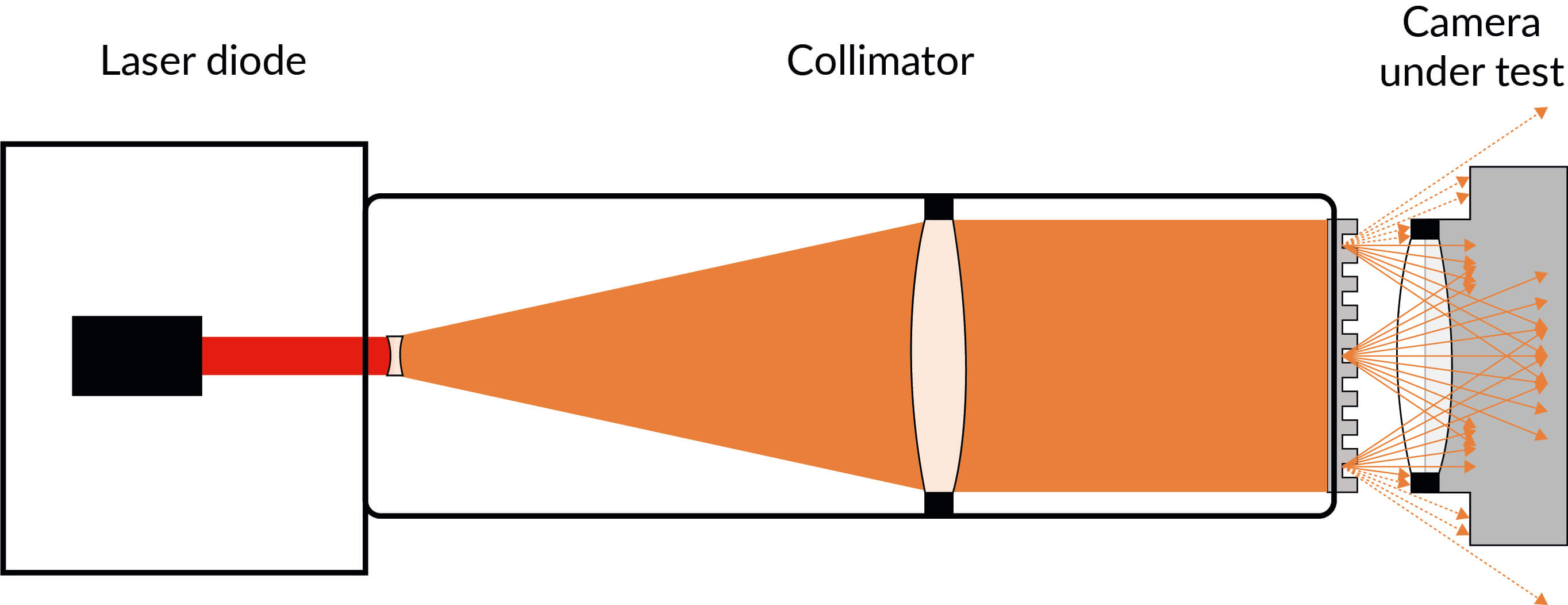
GEOCAL technology
With GEOCAL technology, you can generate a grid of light spots originating from infinity, and the camera positioning is translation invariant (to a certain extent). This method separates itself from the traditional methods because it requires no relay lens to calibrate from infinity. Calibration of a large field of view camera is possible, as well as stereo camera adjustments.
This technology creates a much more flexible solution than traditional methods that rely on test charts with regular patterns (these patterns also need to be scaled depending on the field of view and the intended object distance) and excess products (relay lenses) when calibrating from infinity.
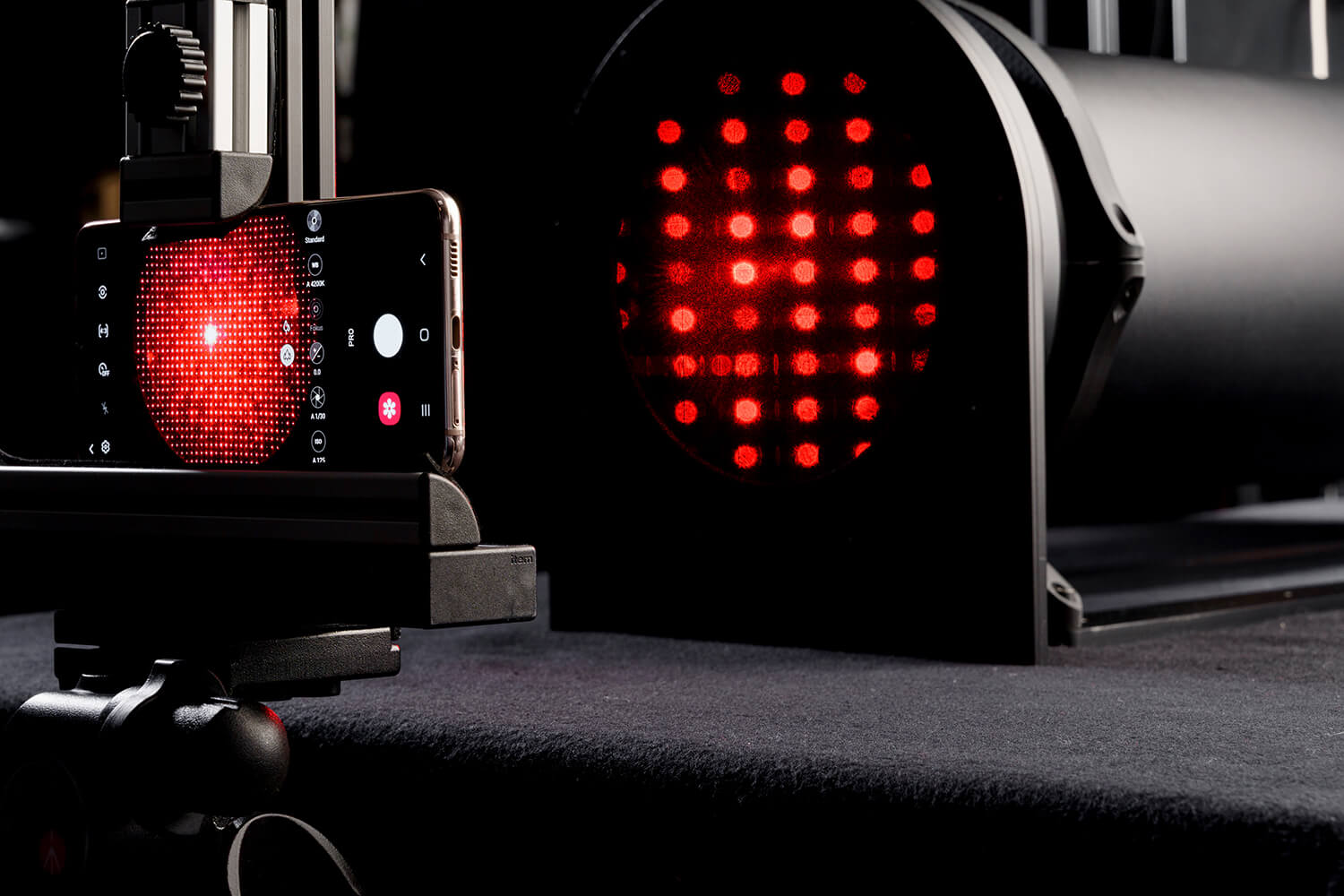
The GEOCAL device
Using this new technology, our development team created the GEOCAL device, which uses a beam expanded laser in combination with a diffractive optical element to deliver a modern solution for geometric camera calibration. One of the main benefits of the GEOCAL over other methods is its compact design. Such a design creates more opportunities for integration into test labs of any size without relay lenses.
GEOCAL has a standalone software with a GUI interface for evaluating test results, and we are currently implementing the solution into the iQ-Analyzer-X.
See the GEOCAL product page for more details.
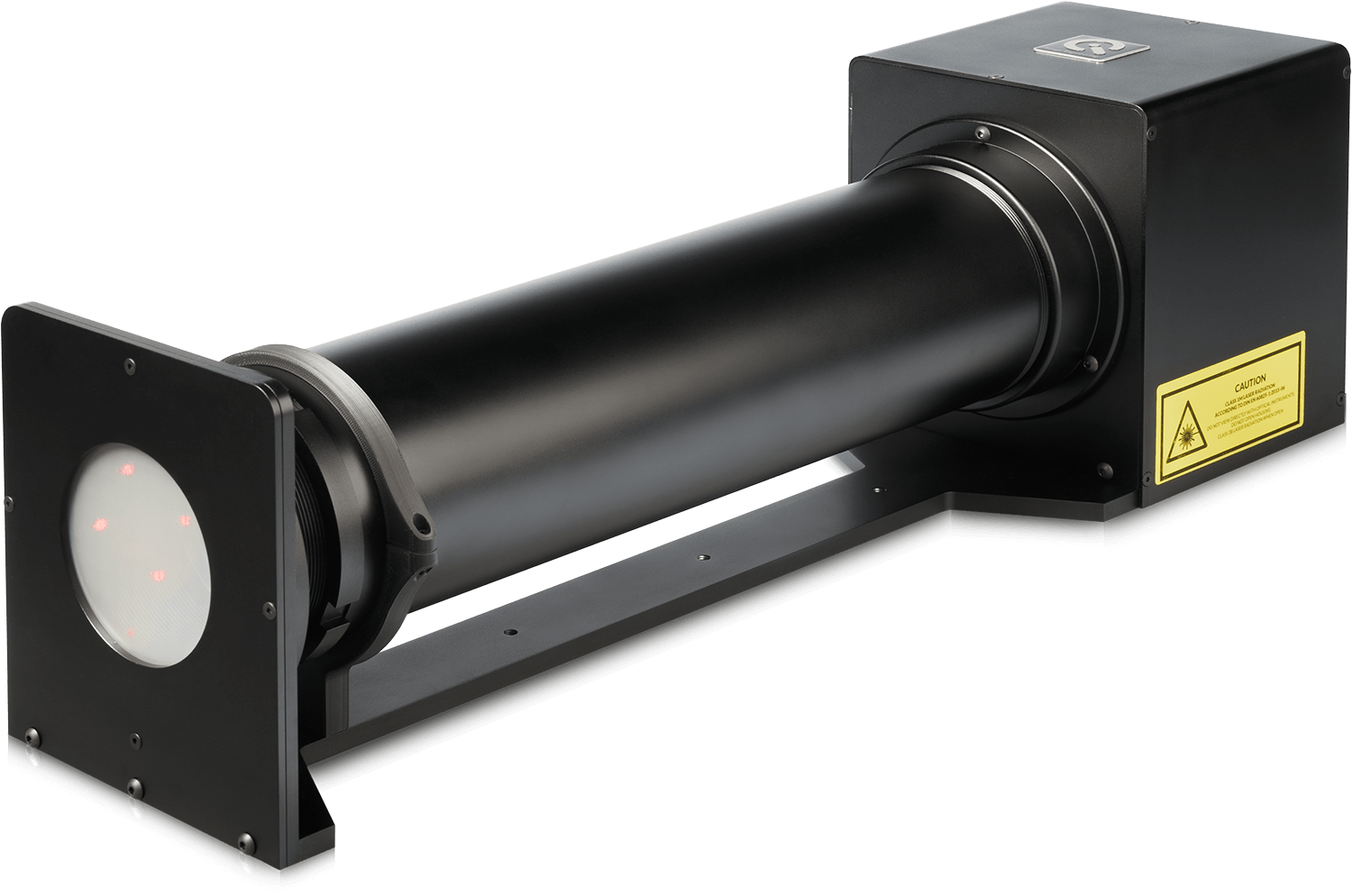
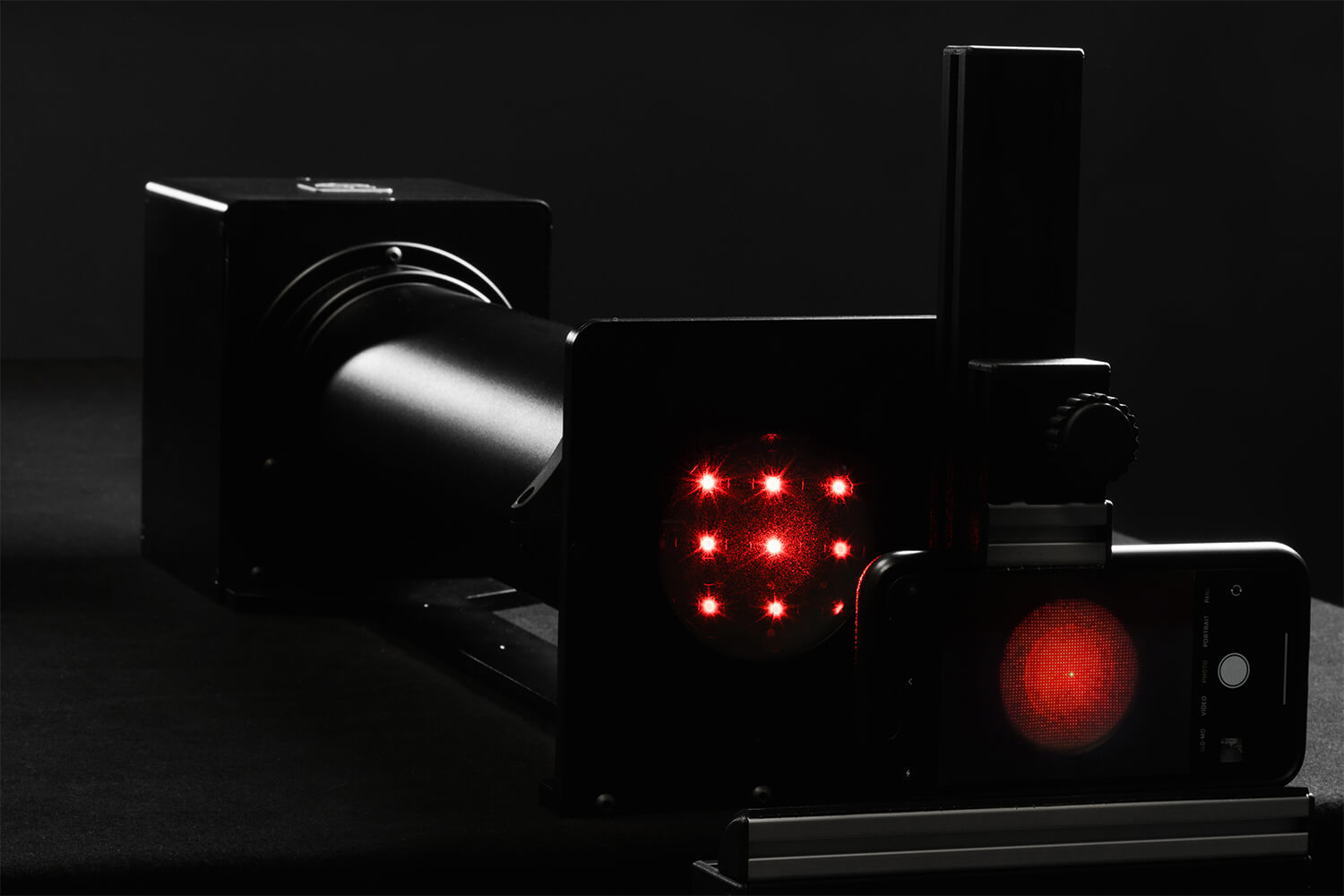
Want to learn more about geoemetric calibration?
Contact us to set up a training session with our engineers.

